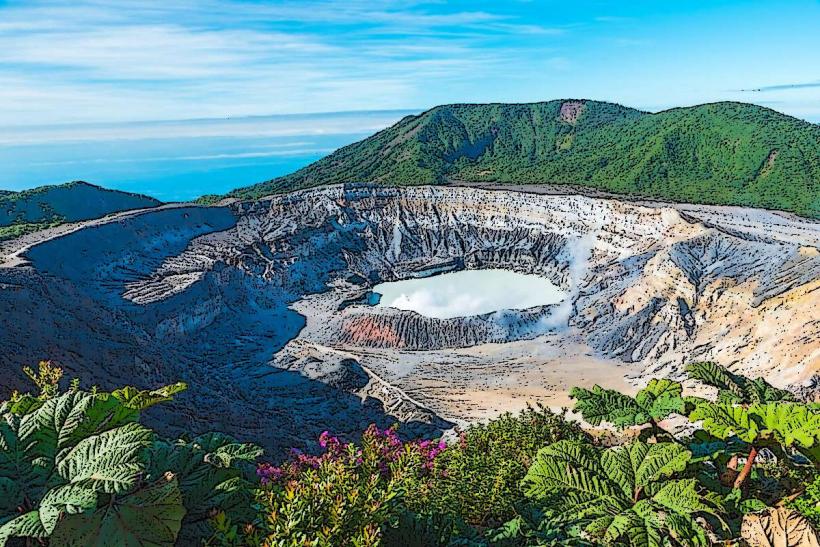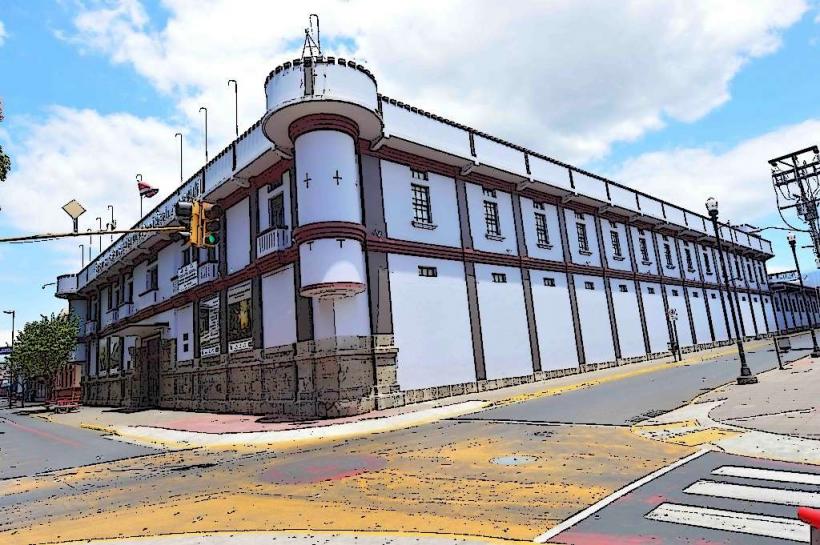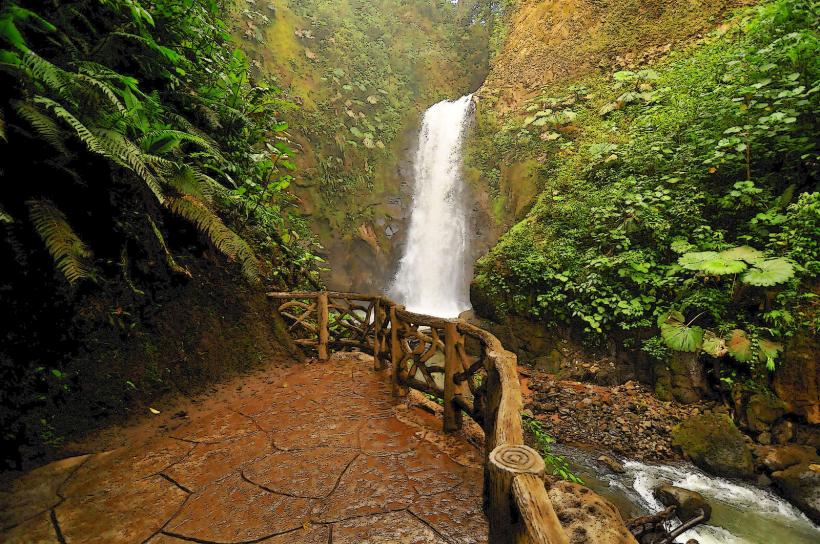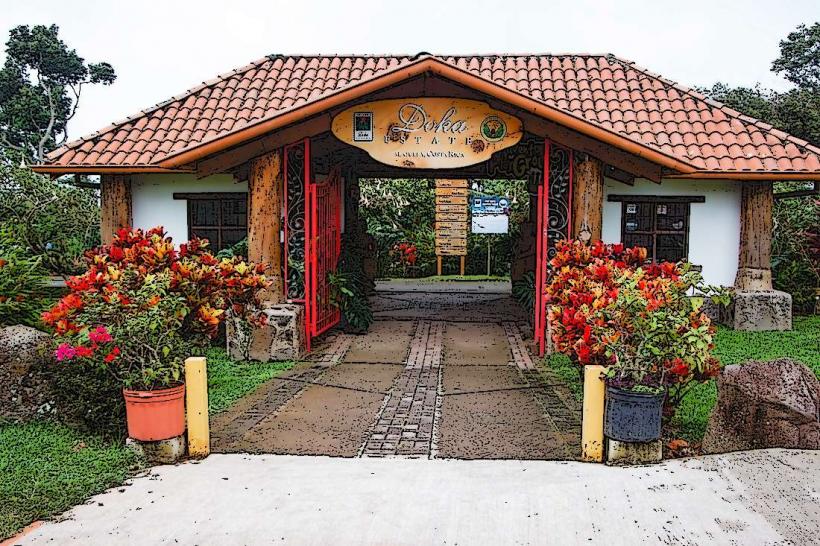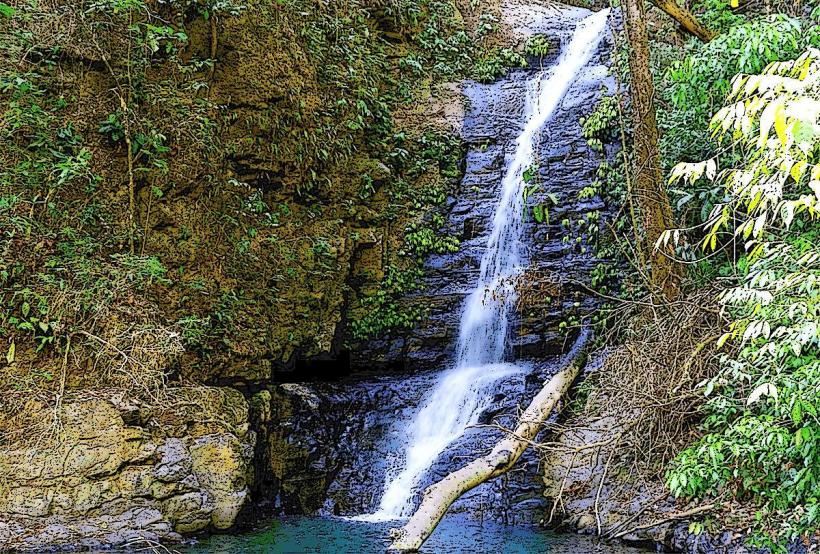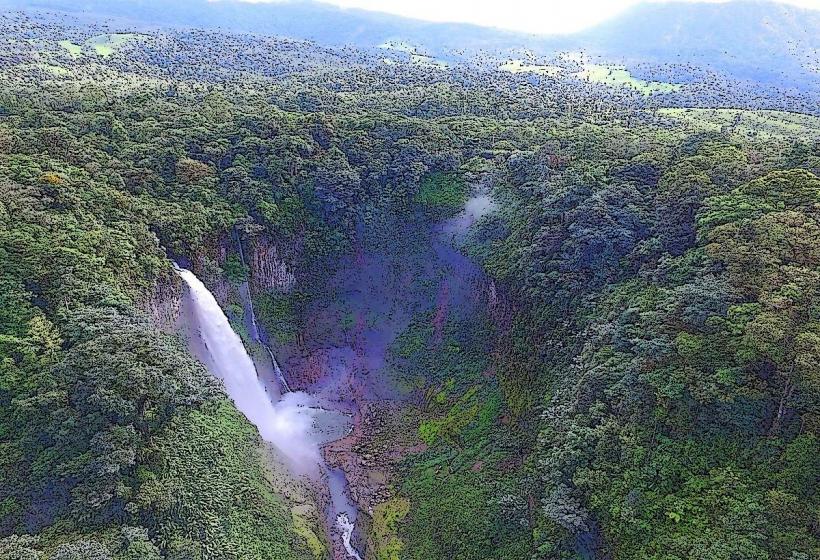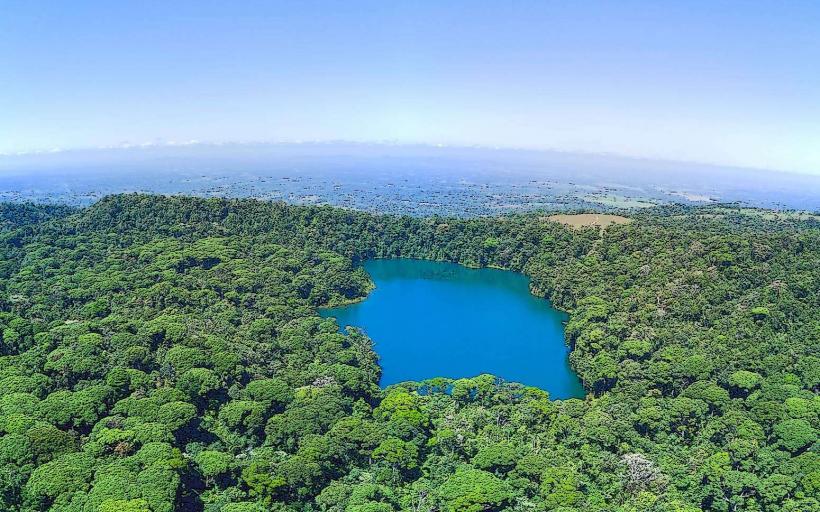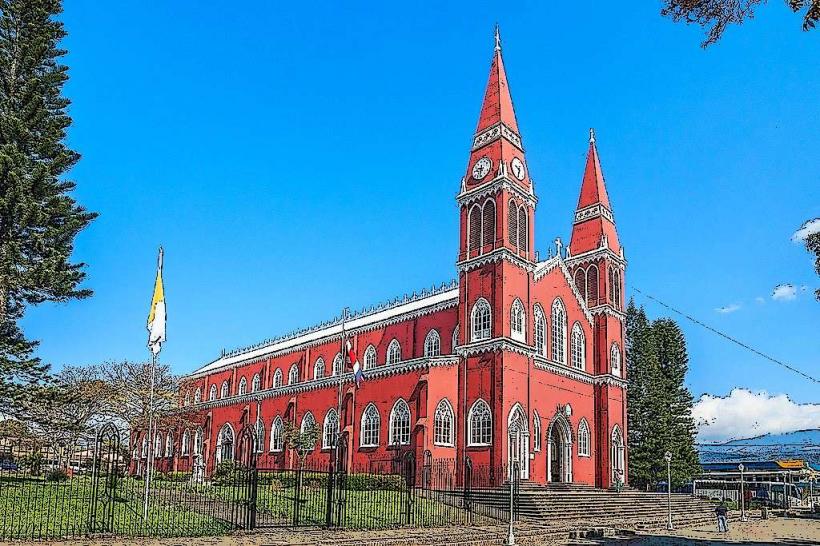Information
Landmark: Arenal Volcano National ParkCity: Alajuela
Country: Costa Rica
Continent: North America
Arenal Volcano National Park is one of Costa Rica’s most iconic and popular national parks, located in the northwestern region of the country, near the town of La Fortuna in Alajuela Province. Known for its active Arenal Volcano, the park is a natural wonderland filled with lush rainforests, hot springs, and a variety of wildlife, making it a top destination for eco-tourism, adventure seekers, and nature lovers.
Geography and Location
- Location: Arenal Volcano National Park is located about 3 hours north of San José, the capital of Costa Rica. The park is situated near the town of La Fortuna, which serves as the main entry point for visitors. The park encompasses the Arenal Volcano, a dormant stratovolcano that rises to an elevation of 1,670 meters (5,476 feet) above sea level, and stretches into the surrounding rainforest and Lake Arenal.
- Topography: The landscape of the park is marked by dramatic contrasts, with the Arenal Volcano towering above the landscape, surrounded by lush lowland rainforests, volcanic rocks, and lava fields from past eruptions. The park also includes portions of Lake Arenal, offering opportunities for water activities such as kayaking and fishing.
Arenal Volcano
The Arenal Volcano is the centerpiece of the park and one of Costa Rica's most active volcanoes. For much of the 20th century, the volcano was in almost continuous eruption, spewing ash, lava, and gases. However, in 2010, it entered a resting phase, and its eruptions have significantly decreased. Despite this, Arenal remains an iconic symbol of Costa Rica's geological activity and is still an impressive sight, especially when viewed from the surrounding park and town.
- Last Eruptions: Arenal's last major eruption occurred in 1968, which resulted in significant lava flows and a volcanic explosion that caused the destruction of nearby settlements. Since then, the volcano has been continuously active, but its eruptions have been smaller and less destructive.
- Current Activity: While the volcano is no longer as active, the surrounding area remains a hub for geothermal activity, with numerous hot springs and fumaroles (steam vents) present in the region.
Ecological Significance
Arenal Volcano National Park is a diverse and ecologically rich area that offers a variety of ecosystems, from volcanic landscapes to tropical rainforests and wetlands. The park is part of the Arenal Conservation Area, which also includes Lake Arenal and surrounding regions, making it an important habitat for various species of flora and fauna.
Flora:
- The park is home to a wide range of plant species, including tropical hardwoods, vines, ferns, and epiphytes such as orchids and bromeliads. These plants thrive in the park’s humid environment, supported by the volcanic soil, which is rich in minerals.
- The forest cover varies from primary rainforests to secondary forests that have regenerated after previous volcanic eruptions.
Fauna:
- Arenal Volcano National Park boasts a wide variety of wildlife. The rainforests and wetlands provide habitat for numerous animals, including:
- Monkeys: Both the howler monkey and white-faced capuchin monkey can be seen in the park’s forested areas.
- Big cats: While more elusive, jaguars and ocelots are present in the park.
- Birds: The park is a haven for birdwatchers, with species such as the scarlet macaw, toucans, hummingbirds, and parrots. It is also home to migratory birds during the winter months.
- Reptiles and amphibians: The park has a variety of reptiles, including iguanas and snakes, as well as amphibians like the colorful poison dart frogs.
- Insects: The area is teeming with insect life, including butterflies, beetles, and moths.
Aquatic Life:
- Lake Arenal, which borders the park, is home to various species of fish, including tilapia, bass, and catfish. The lake also attracts water birds and other wildlife along its shores.
Activities in Arenal Volcano National Park
Hiking and Trails:
- There are several hiking trails in the park, ranging from easy walks to more challenging treks. The trails take visitors through tropical rainforests, across volcanic landscapes, and along lava fields.
- Los Tucanes Trail: A relatively short trail (around 2 km) that leads to a viewpoint with great views of Arenal Volcano.
- Cerro Chato Trail: A longer and more challenging trail that takes visitors to the crater of Cerro Chato, an extinct volcano next to Arenal. The hike is steep, and the reward is a beautiful view of the crater lake.
- Arenal 1968 Trail: A popular trail that takes visitors through the lava fields of the 1968 eruption, offering views of the volcano and surrounding landscapes.
Hot Springs:
- One of the highlights of visiting Arenal is the opportunity to relax in the hot springs that are heated by the geothermal energy of the volcano. The area around La Fortuna and Arenal is home to several natural and resort-style hot springs, such as:
- Tabacón Hot Springs
- Baldi Hot Springs
- Eco Termales Hot Springs
- These hot springs are a perfect way to unwind after a day of hiking or exploring the park.
Wildlife Watching:
- The park offers abundant opportunities for wildlife viewing, particularly for birdwatching. Early mornings or late afternoons are ideal for spotting monkeys, sloths, birds, and other wildlife. Guided tours help visitors spot and identify different species.
Water Activities:
- Lake Arenal is a great place for water-based activities. Visitors can engage in kayaking, canoeing, fishing, and even stand-up paddleboarding. The lake is often calm and ideal for those looking for a more tranquil experience.
Canopy Tours:
- Adventure seekers can enjoy zip-lining through the forest canopy, offering panoramic views of the volcano, rainforests, and lake. Several companies offer canopy tours, providing visitors with an adrenaline rush while experiencing the area’s beauty from above.
Horseback Riding:
- Horseback riding tours are available, offering a chance to explore the park's trails, visit nearby waterfalls, and experience the surrounding landscapes in a more leisurely way.
Conservation and Environmental Impact
Arenal Volcano National Park plays an essential role in biodiversity conservation and in the preservation of Costa Rica’s volcanic landscapes. The park is part of the larger Arenal Conservation Area, which works to protect the flora and fauna of the region, promote sustainable eco-tourism, and support the local community.
Sustainable Tourism: The park and surrounding areas have made efforts to manage tourism in a sustainable manner, ensuring that the influx of visitors does not damage the delicate ecosystems. Eco-lodges, guided tours, and park management all focus on minimizing human impact while educating visitors on conservation efforts.
Geothermal Energy: The geothermal activity of the Arenal Volcano has contributed to the development of geothermal energy in the region, reducing the reliance on fossil fuels.
Practical Information
Best Time to Visit:
- The best time to visit Arenal Volcano National Park is during the dry season, which lasts from December to April. This period offers more predictable weather and is ideal for hiking and outdoor activities.
- The rainy season (May to November) brings frequent afternoon showers, but the park is still beautiful during this time, with lush vegetation and fewer tourists.
Access:
- Arenal Volcano National Park is accessible from La Fortuna, which is the closest town to the park. From there, visitors can easily reach the park by car, taxi, or guided tour.
- The park is approximately 3 hours from San José, the capital of Costa Rica, by car.
Accommodations:
- There are a variety of accommodations around La Fortuna and Arenal, ranging from eco-lodges and boutique hotels to more luxurious resorts. Many accommodations offer packages that include guided tours of the park, hot spring access, and other activities.
What to Bring:
- Sturdy hiking shoes for trails that can be muddy or uneven.
- Lightweight, breathable clothing, especially for hiking, with layers for cooler evenings.
- Rain gear for unpredictable showers, especially in the rainy season.
- Binoculars and camera for wildlife watching and capturing the stunning scenery.
- Swimwear for enjoying the hot springs.
Conclusion
Arenal Volcano National Park is a must-visit destination for those exploring Costa Rica’s natural beauty. From the towering volcano and its hot springs to the lush rainforests and abundant wildlife, the park offers something for everyone—from adventure seekers to those simply wanting to relax and enjoy the stunning surroundings. Whether you’re hiking to the volcano’s lava fields, soaking in the hot springs, or spotting exotic birds, Arenal Volcano National Park provides a memorable and diverse experience in one of the world’s most biodiverse countries.

